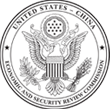
Despite four decades of promised liberalization, the Communist Party-state retains the ability to intervene decisively in China’s banking system to achieve desired outcomes. This comprehensive report lays out how China’s banking system has reached an important juncture, as two ongoing and competing constraints have been exacerbated by the current COVID-19 pandemic: (1) Banks of all sizes are under pressure to clean up their balance sheets, raise new capital, and dispose of bad loans; and (2) Beijing is forcing them to boost lending to struggling companies at nonmarket rates to forestall a further slowdown in the pace of economic growth. Further, Beijing’s focus on maintaining stability and control warps market incentives by encouraging investors, creditors, and depositors to evaluate a bank based on its likelihood of receiving government support if there is a risk of insolvency rather than on its individual fundamentals.
As the COVID-19 fallout grows, exchange rates are the most likely channel through which economic pain could be transmitted to U.S. investors. But a number of other channels, such as the inclusion of Chinese equities into major international indexes, are also raising the exposure of U.S. investors and savers to China’s risky banking system. The report concludes by providing policy considerations for Congress and describes the opportunities and tradeoffs involved in the deepening integration of the U.S. and Chinese financial sectors.
